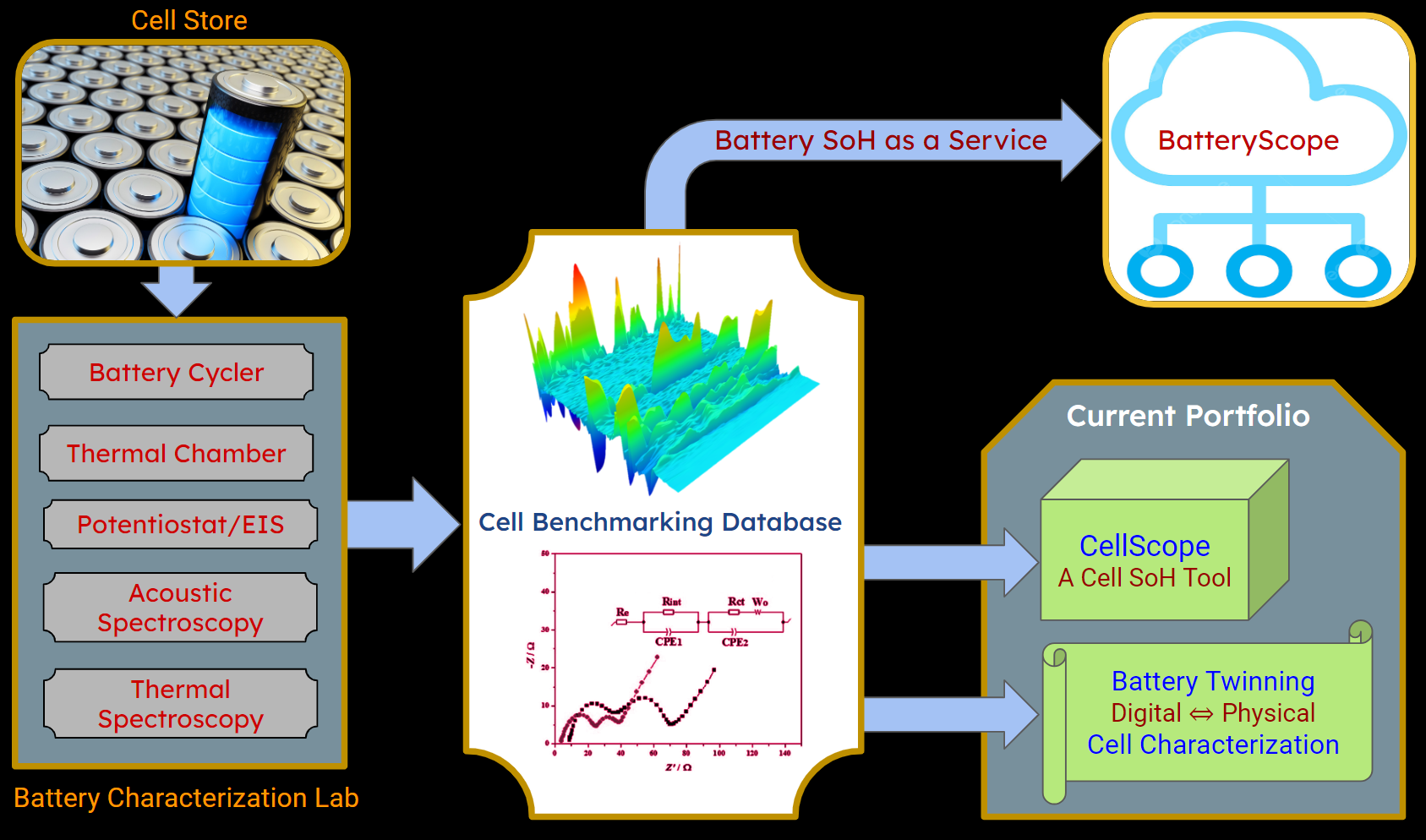ThinkClock is an R&D driven company focused on Battery Health Analytics using Spectroscopy techniques namely EIS (Electrochemical Impedance Spectroscopy), Acoustic and RF Spectroscopy. Further, we reveal the diagnostic insight about the battery health while relating the microscopic data of the battery with the observable system level behaviour with the help of the models based on Physics and Machine Learning.
 ThinkClock offers lab-based cell characterization service (for performance and uniformity assessment) to the cell OEMs and the battery pack manufactures. We are creating a Cell Benchmarking Database for the commercially available cells using the lab-based characterization data, in-order to provide an independent source of truth for the system integrators. While leveraging our Cell Benchmarking Database,
we have developed a portable tool
ThinkClock offers lab-based cell characterization service (for performance and uniformity assessment) to the cell OEMs and the battery pack manufactures. We are creating a Cell Benchmarking Database for the commercially available cells using the lab-based characterization data, in-order to provide an independent source of truth for the system integrators. While leveraging our Cell Benchmarking Database,
we have developed a portable tool CellScope , which can quickly assess the quality of a cell using the spectroscopy techniques.
ThinkClock business strategy focuses on transforming inhouse battery SoH consultancy expertise into modular battery SoH tools which could be easily used or seamlessly integrated by other battery eco-system partners. Along this strategy, we are working on a Battery SoH as a Service platform:
BatteryScope powered by Digital Twins. For commercialization, we are partnering with EV fleet partners and EV OEMs helping them to transform the easily measurable onboard data (voltage, current and temperature) into interpratable diagnostic insight facilitating predictive maintainance of Battery asstes.




A battery could be represented by this equivalent circuit model


Battery Characterization Lab

We have access to state-of-the-art Battery characterization equipment including Battery Cycler (for both Cell and Pack), Thermal chamber (capable of generating Temperature and Humidity mimicking anywhere on earth), Potentiostat for Electrochemical Impedance Spectroscopy (EIS), Thermal Camera for heat analysis of the battery pack, etc.
For the development of Digital Twins of Batteries (specially packs), extensive data collection is required, so we are also developing automation tools for scripted data collection.
For the development of Digital Twins of Batteries (specially packs), extensive data collection is required, so we are also developing automation tools for scripted data collection.
Spectroscopic Techniques for Battery SoH

Electrochemical Impedance Spectroscopy (EIS)
is a powerful and non-destructive technique used for the characterization and analysis of batteries and other electrochemical systems. It provides valuable insights into the internal health of batteries by measuring their impedance response over a range of frequencies. Typical Battery Signature from the Electrochemical Impedance Spectroscopy is shown here.
Battery capacity decreases as it goes through charge-discharge cycles over the period of time. This State-of-Health (SoH) degradation reflects as a shift of the EIS signature, which could be used to extract a lot of subtle insights about the internal chemistry of the battery.
We are using this EIS data to train a machine learning model, which estimates the parameters of the battery as represented by an equivalent circuit model for the ease of interpretation by a battery expert.

Acoustic Spectroscopy
We are using this non-destructive technique which uses high-frequency acoustic signals to characterise the changes in the internal structure of the battery. In order to interpret the response signature of the battery from the acoustic spectroscopy, we are using a combination of 1) machine learning 2) physics based modelling and 3) insights from the battery scientists
Setup for Acoustic Spectroscopy for battery charactyerization and the response signature is shown here.
Setup for Acoustic Spectroscopy for battery charactyerization and the response signature is shown here.
